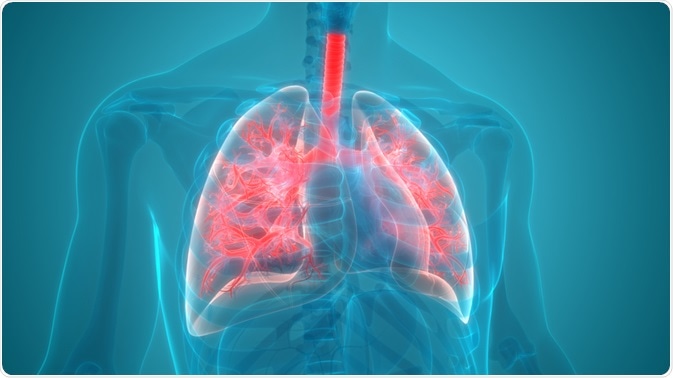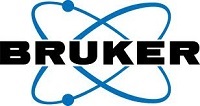Pneumonia is a common complication which is associated with mechanical ventilation in critically ill hospital inpatients. The condition is linked to a prolonged stay in the intensive care unit and can lead to increases in healthcare costs as well as an increased risk of mortality. However, diagnostic techniques for pneumonia in patients who receive a ventilator are somewhat lacking.

Unmet needs in diagnostic techniques for ventilator-assisted pneumonia
Generally, the leading causes of ventilator-associated pneumonia are treatment-resistant organisms (e.g., Staphylococcus aureus) and gram-negative organisms. Numerous diagnostic techniques are in place for identifying ventilator-associated pneumonia – including laboratory tests, radiological findings, and clinical features – but they lack robust sensitivity and specificity.
For example, soluble triggering receptor expressed on C-reactive protein as well as myeloid cells are diagnostic biomarkers that have previously shown a lack in strong specificity for pneumonia.
Metabonomics, or the study of singular metabolic responses to disease or intervention over time, is an analytical technique that is evolving rapidly and may facilitate differentiating one disease from another between patients.
In the case of pneumonia, numerous metabolites have been associated with the condition, but none have been sufficiently utilized in clinical diagnostic tests. Additionally, studies are still to adopt metabonomics for the identification of ventilator-associated pneumonia.
Metabonomics study identifies metabolites associated with pneumonia
An observational study, conducted by researchers from Imperial College London in the United Kingdom, discovered that metabolic profiling using nuclear magnetic resonance (NMR) spectroscopy could be capable of aiding the diagnosis of pneumonia in ventilated patients in the ICU.
Patients with pneumonia (n=15) and brain injuries (n=26) residing in the ICU at the Imperial College Healthcare NHS Trust in London were placed under observation. Researchers acquired serum samples from patients almost instantly after initiating ventilation.
NMR spectroscopy analysis
Throughout the study, 1D 1H NMR spectra was used to generate metabolic profiles. The investigators carried out 1H NRM experiments with the Bruker AVANCE III 600 spectrometer at 14.1 T using a BBI probe.
The Bruker AVANCE III 600 spectrometer enables high-resolution spectroscopy of liquids, inclusive of serum samples. It comes equipped with 5 RF channels, a sample temperature range spanning −40 ºC to 80 ºC, and a quadruple-resonance (1H-31P-13C-15N) inverse cryoprobe with cooled 1H and 13C preamplifiers.
While the AVANCE III HD platform was utilized for this study, a brand-new next-generation spectrometer, the AVANCE NEO, provides greater scalability and faster controls. Each NMR channel within the AVANCE NEO comes equipped with the capability to both transmit and receive, and the range of the platform has been extended to >1.2 GHz.
For each sample, researchers procured 3 different 1H NRM spectra of serum samples, each with an acquisition time of 12 minutes. Additional 2D experiments were conducted on specific samples to determine metabolites. Moreover, Bruker’s AMIX 3.9.11 software was utilized to determine metabolites in the SBASE database. Total Correlation Spectroscopy and 1H - 1H Correlation Spectroscopy was used to exhibit coupled protons up to 6 bonds apart within a molecule as well as directly coupled proton spins, respectively.
Key metabolites identified by NMR spectroscopy
Between the patients with brain injuries, ventilator-associated pneumonia advance in 7 patients at an average of 127 hours post-ventilation initiation. Orthogonal Partial Least Squares Discriminant Analysis (OPLS-DA) modeling markedly identified the pneumonia patients from patients with brain injuries (R2Y = 0.91, Q2Y = 0.28, p=0.02). Moreover, the OPLS-DA identified between patients suffering with ventilator-associated pneumonia from those patients without (R2Y = 0.94, Q2Y = 0.27, p=0.05).
The key metabolites that demonstrated the capacity to identify the patients with pneumonia were amino acids, lipid species, and glycoproteins. Researchers claimed that lower total high-density lipoprotein and low-density lipoprotein cholesterol as well as higher concentrations of triglycerides could be a key factor when identifying patients with pneumonia when compared to patients without pneumonia. Additionally, glycoproteins increase during inflammation, indicating that higher circulating glycoproteins may signify pneumonia-associated inflammation.
The most prevalent metabolites associated with pneumonia as determined in this study were amino acids, alanine, glutamine, and phenylalanine. The investigators also observed phospholipids, specifically choline, differentiated patients with pneumonia. Particularly, a reduction of phospholipids could indicate the presence of pneumonia in patients admitted to the ICU and who require a ventilator.
While this study had certain limitations, including the small number of patients within each group, including those within the VAP group. However, despite such limitations, according to the researchers the data represents an encouraging starting point that may lead the way to larger studies.
Potential relevance and future research directions
In conclusion, the researchers stipulate that conducting 1H NMR serum analysis of critically ill patients admitted into the ICU with pneumonia or brain injuries could differentiate the patients with ventilator-associated pneumonia from those without pneumonia. Therefore, in-line with these observations, researchers indicate that NMR spectroscopy could bear practical relevance for diagnostic approaches in critical care.
In addition, NMR may help stratify patients according to pneumonia risk. This stratification may result in the enhanced prophylactic targeting of patients with a greater risk of ventilator-associated pneumonia.
The researchers further stated that these studies may also facilitate the creation of a protocol that will stratify patients with pneumonia based on the organism which led to their condition; which could assist in the defining of metabolic phenotypes. However, large-scale studies are required to validate these theories.
References
- Chastre J, Fagon JY. Ventilator-associated pneumonia. Am J Respir Crit Care Med. 2002;165(7):867-903.
- Antcliffe D, Jiménez B, Veselkov K, Holmes E, Gordon AC. Metabolic profiling in patients with pneumonia on intensive care. EBioMedicine. 2017;18:244-253.
- Póvoa P1, Coelho L, Almeida E, et al. C-reactive protein as a marker of infection in critically ill patients. Clin Microbiol Infect. 2005;11(2):101-8.
- Oudhuis GJ, Beuving J, Bergmans D, et al. Soluble Triggering Receptor Expressed on Myeloid cells-1 in bronchoalveolar lavage fluid is not predictive for ventilator-associated pneumonia. Intensive Care Med. 2009;35(7):1265-70.
About Bruker BioSpin Group
The Bruker BioSpin Group designs, manufactures, and distributes advanced scientific instruments based on magnetic resonance and preclinical imaging technologies. These include our industry-leading NMR and EPR spectrometers, as well as imaging systems utilizing MRI, PET, SPECT, CT, Optical and MPI modalities. The Group also offers integrated software solutions and automation tools to support digital transformation across research and quality control environments.
Bruker BioSpin’s customers in academic, government, industrial, and pharmaceutical sectors rely on these technologies to gain detailed insights into molecular structure, dynamics, and interactions. Our solutions play a key role in structural biology, drug discovery, disease research, metabolomics, and advanced materials analysis. Recent investments in lab automation, optical imaging, and contract research services further strengthen our ability to support evolving customer needs and enable scientific innovation.
Sponsored Content Policy: News-Medical.net publishes articles and related content that may be derived from sources where we have existing commercial relationships, provided such content adds value to the core editorial ethos of News-Medical.Net which is to educate and inform site visitors interested in medical research, science, medical devices and treatments.